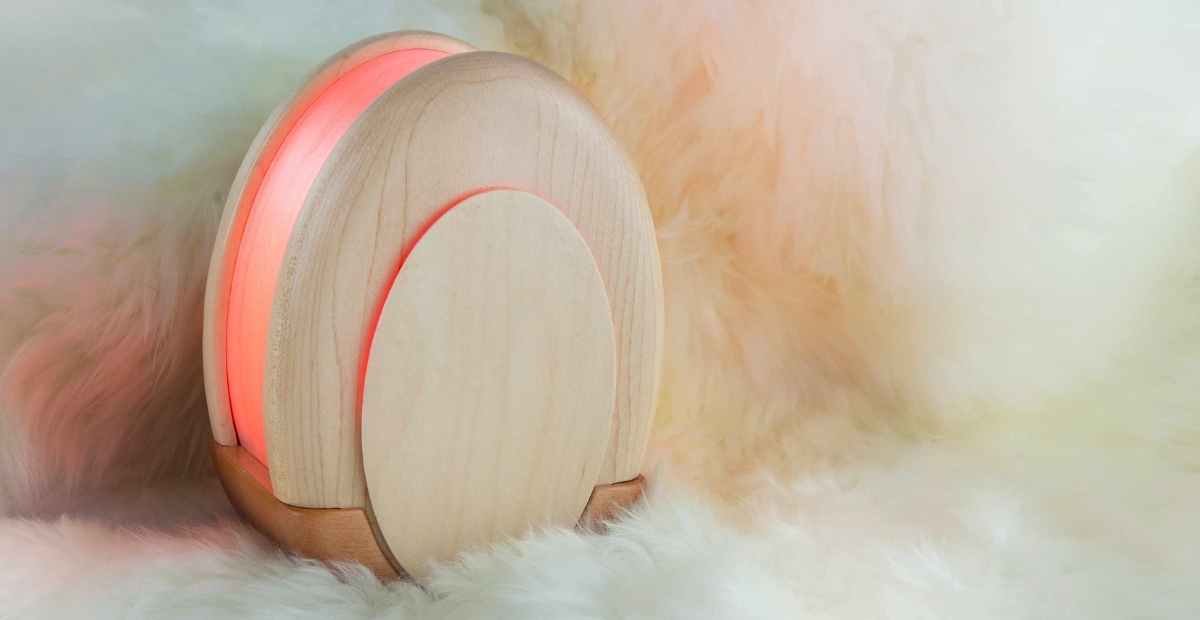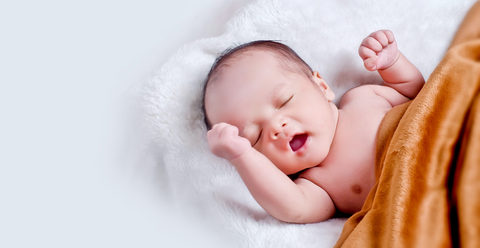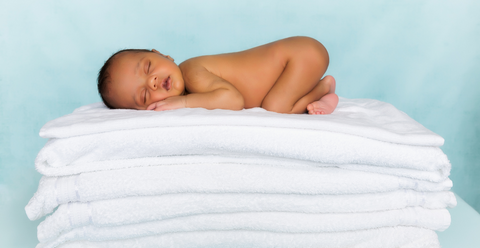The Kulala Baby Sleep Lamp, for Optimal Baby Sleep, Launching Soon!
•
We’re so excited to finally introduce you to the latest tool in your baby sleep arsenal: the Kulala Baby Sleep Lamp!
Our new baby sleep lamp was developed based on award-winning scientific research. It’s one of the only nursery lamps out there that was created by sleep scientists—and therefore, works with your child’s natural circadian rhythm.
The lamp’s warm red light helps promote sleep hormones—unlike other lamps which actually help to keep children awake.
How does the Kulala Baby Sleep Lamp work?
Read on for more info!
Sleep Genes—and Fruit Flies
Our founder, Dr. Sofia Axelrod, is a sleep scientist. When she became a mother, she decided to use her background in science to help her children get more sleep.
Dr. Axelrod worked under Dr. Michael Young, who 35 years ago worked in a lab that made an important discovery regarding fruit flies. Namely, that fruit flies have a gene that regulates various aspects of their circadian rhythms.
What do fruit flies have to do with children’s sleep? A lot, as it turns out.
Humans have those same circadian rhythm-related genes. (In fact, ALL plants and animals do.) We now call them "clock genes." Clock genes tell us what time of day it is, and what our body should be doing (eating, digesting, sleeping, etc.)
How do these genes know what time it is, and what our bodies should be doing? Light tells them, of course.

How Light Affects Your Child’s Sleep
Light affects us all, human, plant, and fly alike. But human children and babies are especially sensitive to light.
Why?
Scientists aren’t entirely sure, actually. One theory is the fact that the lenses in children’s and babies’ eyes are clearer than the lenses in adults’ eyes. These lenses transmit light from the outside world to the backs of the eyes, and they are known to grow cloudier with age.
Whatever the case, the science is clear: When children are exposed to high levels of blue light at night, their melatonin levels—which promote sleep, and under normal circumstances kick in when the sun sets—are dampened in their bodies. Decreasing melatonin makes it much harder for children (or anyone) to get to sleep—and much harder for us all to stay asleep.
That’s why it’s so important to keep blue light from our sleep environments.
“But the lamp I have emits yellow light!”
To the naked eye, it may appear that your bedside lamp emits yellow light. But in truth, all artificial lights emit some form of blue light—except the red light.
Why Does Light Color Matter?
Light is made up of different wavelengths which correspond to different colors. You know this already; just think about rainbows.
Sunlight has a high proportion of blue light, which signals to our bodies that it’s time to wake up. In the evening, the blue light in the sun decreases and the amount of red light rises (which is why sunsets are usually pink, orange, or red). This decrease in blue light and increase in red light tells our bodies it’s time to get ready for sleep.
This is how light instructs our circadian rhythm.
How to Use Light (or lack thereof) to Enhance Your Child’s Sleep
Blue light is naturally eliminated from nature when the sun sets. But it’s not always as simple as putting baby down for bed once it gets dark.
For one, there’s summer, where the sun may not set until an hour or so after your baby’s bed time, and rise an hour or so earlier than you want your baby to be up.
For another, some people live in parts of the globe where the sun sets much later than they want their babies to get to sleep. Consider St. Petersburg, Russia, where the sun sets at 11:25 PM on the longest day of the year. Or Svalbard, Norway, where on the longest day of the year, the sun does not set at all!
There’s also ambient light from streetlights and cars, especially if you live in a city.
Blackout Shades
To deal with light outside your baby’s room, be it natural or ambient, we suggest blackout shades. Blackout shades allow you to dictate when your baby goes to sleep, as well as when they wake up. Just keep them down during your baby’s entire sleep cycle to eliminate all outside blue light.
Amazon makes some basic, affordable, portable shades that we love. For a more permanent, albeit slightly pricier option, Home Depot makes custom-cut blackout shades. And the New York Times recently did a great roundup of several more of the best shades on the market; check it out and find the right ones for you.
Not home? Not a problem! When you're on the go, Snoozeshade and Slumberpod are both great options for getting your baby that much-needed blackout sleep.
Blue Light Inside the House
When it comes to eliminating blue light from your child’s sleep environment, however, don’t forget about the biggest culprit of all: blue light inside your house.
Melatonin, which we’ve explained is the hormone released at night that regulates our sleep, decreases in the presence of blue light. Artificial lights, like incandescent lightbulbs and the light from TVs, tablets, and smartphones, may look yellow or white to our eyes—but they all release some amount of blue light. Even candlelight has a small amount of blue light in it!
So what to do about that light?
Turn Off Or Dim All Screens Before Bedtime
This is good advice for everyone, babies, children, and adults. For adults, turning off screens has the added benefit of taking us away from things like the news, or any stimulating content that will make us excited or upset.
But the most important part of putting away or dimming screens at bedtime is getting our eyes away from that blue light they emit. Smart phones and tablets that aren’t on Night Mode and dimmed let a large amount of blue light into your nighttime environment—not good!
And as we said before, children are even more sensitive to that blue light than adults are. In fact, in 2015, a meta-analysis of 67 studies aiming to test the effects of screens on children came to a definitive conclusion: Ninety percent of the studies found a correlation between evening screen time and poor sleep!
Red Light for Nighttime
So what’s a parent to do when they need a light inside the house in the evening, as they’re getting their kids ready for bed?
That’s where the red light comes in.
Red light has been used in labs for years in order to allow scientists to work with their subjects, be they flies or another kind of insect, other animal, or human, without disrupting their natural circadian rhythms.
If you keep a red light in your child’s bedroom, it means you don’t need any blue light. You’ll have eliminated all blue light well before bedtime. Red light lamps have the added bonus that if you need to turn the light on at some point during the night, you’ll be at a much lower risk of waking your child up.
And if your child does wake up, they’ll be able to get back to sleep more easily, having only the red light on. There will be nothing in the room signaling to their bodies it’s time to wake up.
You can easily find red light bulbs in any hardware store and simply replace your existing light bulbs in your child's bedroom lamps with them.
But wouldn’t it be nice to have a beautiful lamp for the nursery, with the express purpose of promoting sleep?

Enter: The Kulala Baby Sleep Lamp
This lamp was designed with circadian rhythm in mind. It only emits a soft, sleep-promoting, melatonin-creating red light.
While we’re big advocates of gentle sleep training here at Kulala (sleep is good for baby and for you), there’s still the newborn phase. Babies in the fourth trimester are too young to be sleep trained, which means at least a few months of interrupted sleep right after baby is born.
With the Kulala Baby Sleep Lamp in your room or in your baby’s room, if you’re sleeping separately, you’ll have a light to turn on during your baby’s inevitable wakeups that won’t disrupt yours or baby’s sleep. Those night feedings and diaper changes will be easier, and you’ll both get to sleep sooner afterwards.
And once baby gets older and you can sleep train, it’s still an amazing lamp to have. Even once they’re sleeping through the night, the occasional nighttime disruption will happen. Plus, if you turn off other lights and keep only the red light on for storytime, it will help you all get sleepier, faster.
Bonus: the Kulala Baby Sleep lamp has been expertly crafted and designed by award-winning lamp designers. This means it will look beautiful in any bedroom, child’s or adult’s. It comes with 3-step silent touch dimming, which won’t disturb your baby. And it’s made of organic maple wood with a baby-safe Aurora varnish.
You can preorder your own Kulala Baby Sleep Lamp right here, to be among the first to experience it! It ships very soon. We can’t wait to introduce the world to the newest, science-based, most beautiful tool in helping their families get a good night’s sleep.
Questions? Come chat with us on Instagram!





